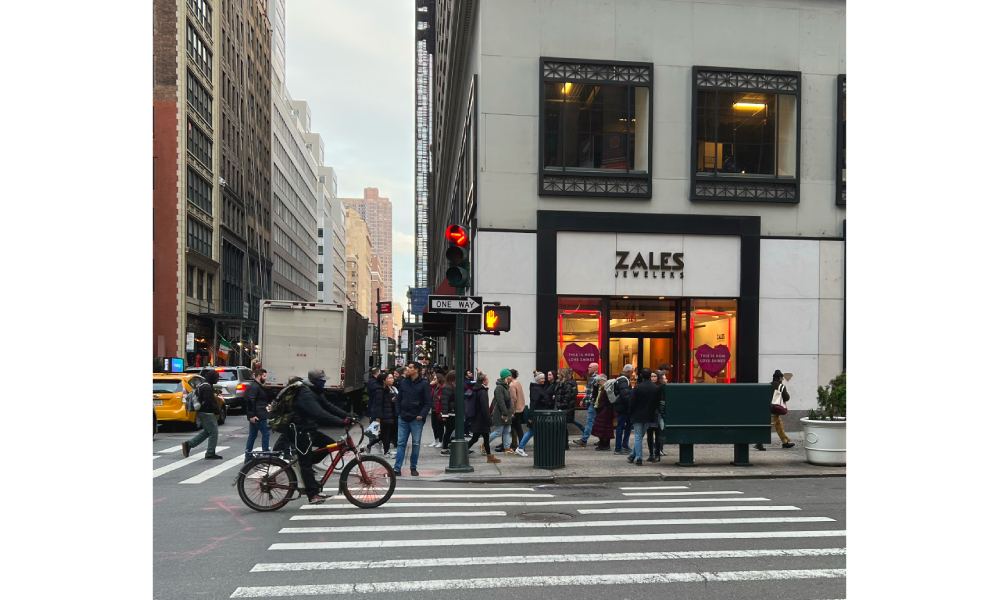A captivating transformation is underway within the U.S. diamond market. After an extraordinary surge in demand for diamond jewellery in 2021, the industry navigated a remarkably steady course in 2022, despite facing headwinds of waning sentiment. As the bridal sector temporarily fades, an alternate ray of light illuminates the industry. At the heart of this metamorphosis lies the rise of the “self-purchase” category, which may possibly outpace the bridal segment by the decade’s end, observes diamond analyst Paul Zimnisky.
Following a generational year for U.S. diamond jewellery demand in 2021, the U.S. market was resiliently flat in 2022 despite a notable slowdown in sentiment in the second half of the year.
Jewellers successfully passed along inflation-related price increases last year which helped buoy sales that exceeded $45 billion, according to Paul Zimnisky estimates. For context, this compares to approximately $37 billion five years ago – equating to a compound annual growth rate of 4.2%.
Looking ahead, a relatively unpredictable macroeconomic backdrop is likely to steer the industry in 2023.
In mid-May, Johann Rupert, Chairman of famed luxury conglomerate Richemont, candidly noted during an analyst event: “(speaking to the health of the U.S. market) do not look at Richemont or luxury goods, look at the aim of the Federal Reserve bank which is to restrict, to bring down inflation, and for that, they’ll have to restrict credit.”
Two weeks prior, the Fed raised its target federal funds interest rate for the tenth time in a row pushing the range to 5.00-5.25% – which compares to 0.00-0.25% as recently as March 2022.
While the rate range is now at the highest level since mid-2007, the market is speculating that peak rates for this cycle have now been reached with the Fed Funds futures market forecasting that the Fed will pivot back to easing by year-end – and looser economic policy tends to be conducive of economic growth and thus consumer spending.
Notably, Signet Jewelers, the largest diamond seller in America, recently forecasted that the U.S. jewellery industry would be down “mid-single-digits” this year, although the company guided that its own sales would only be down-2%-to-flat.
Signet management has said that it expects a lull in U.S. bridal jewellery demand – coming off of a record 2.6 million weddings last year – to begin to recover by the end of this year with momentum in the recovery building into 2024 and 2025.
Bridal diamond demand, e.g. engagement rings and studded wedding bands, is estimated to account for over one-third of U.S. diamond jewellery demand.
In the interim, non-bridal “fine” jewellery, which tends to carry a lower price tag than bridal, is expected to at least partially offset the recession in engagements.

Both Signet, and smaller (but fast growing) competitor, Brilliant Earth are currently investing in expanding their fine jewellery mix (e.g. diamond earnings, necklaces and bracelets) which has been a good proxy for the diamond industry’s self-purchase category.
During an analyst call in this year, Brilliant Earth management said that it has “strategically expanded (its) focus to prioritise growth in fine jewellery” – the company has traditionally sold primarily loose diamonds and set rings.
The “self-purchase” category, which is estimated to currently represent approximately one-third of diamond demand, is the industry’s fastest growing category on a relative basis – and is possibly poised to outpace the bridal category by the end of this decade according to Paul Zimnisky projections.
Notably, in pre-pandemic-2019, the Diamond Producers Association, now the Natural Diamond Council, noted that almost all of the growth in the U.S. market came from the “self-purchase” category. At the time, the organisation launched the “For me, from me” campaign during the Oscars.
Shortly thereafter, De Beers launched the “Forevermark TributeTM Collection” aimed at “symbolising and celebrating the many facets of the wearer… reflecting the growing trend for women to self-purchase.”
Paul Zimnisky, CFA is a leading independent diamond industry analyst and consultant based in the New York metro area. For regular in-depth analysis of the diamond industry please consider subscribing to his State of the Diamond Market, a leading monthly industry report; an index of previous editions can be found here. Also, listen to the Paul Zimnisky Diamond Analytics Podcast on Apple Podcasts or Spotify. Paul is a graduate of the University of Maryland’s Robert H. Smith School of Business with a B.S. in finance and he is a CFA charterholder. He can be reached at paul@paulzimnisky.com and followed on Twitter @paulzimnisky.
Disclosure: At the time of writing Paul Zimnisky held a long equity position in Lucara Diamond Corp, Brilliant Earth Group, Star Diamond Corp, Newmont Corp and Barrick Gold Corp. Paul is an independent board member of Lipari Diamond Mines, a privately-held Canadian company with an operating kimberlite mine in Brazil and a development-stage asset in Angola. Please read full disclosure at www.paulzimnisky.com.

